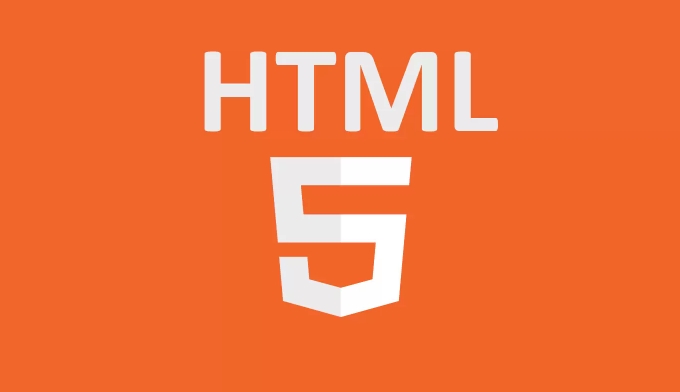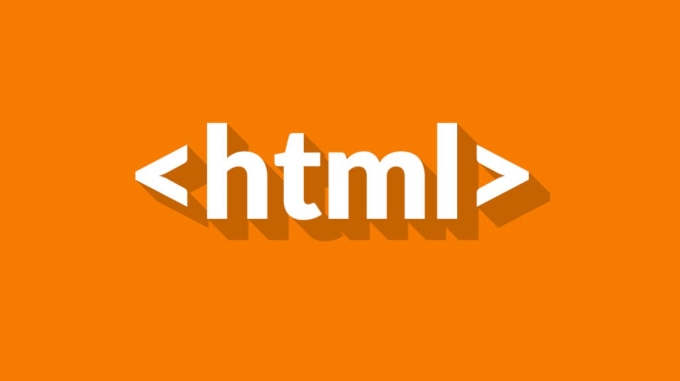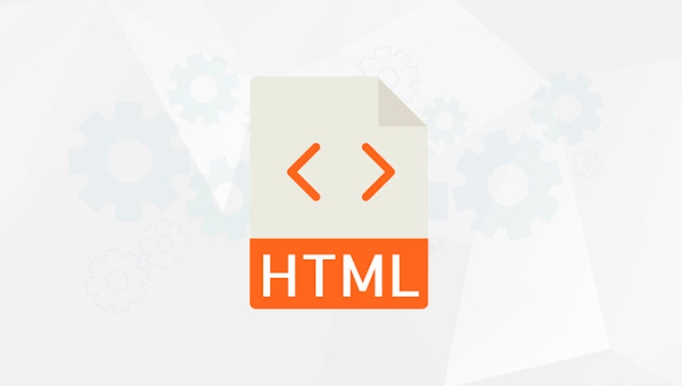The most common method of manipulating HTML custom data properties in JavaScript is to use the dataset property. Through dataset, data attribute values ??can be easily obtained and set. For example, to obtain the data-product-id and data-in-stock values ??of elements, you can use element.dataset.productId and element.dataset.inStock respectively; at the same time, dataset will automatically convert short horizontal line naming to camel naming. Compared with the getAttribute method, dataset is more concise and intuitive, suitable for structured management of multiple data attributes. Its common application scenarios include front-end component communication, status marking, and server-side rendering parameter transmission and other practical development scenarios.

Manipulating HTML custom data attributes in JavaScript is actually very simple and very practical. The most common scenario is to pass some configuration or state information between HTML and JS through these properties.

Get the value of the data attribute
If you want to get a custom data attribute on an element, the most common method is to use dataset attribute. HTML5 allows us to add attributes starting with data- on elements, such as:

<div id="product" data-product-id="123" data-in-stock="true"></div>
Then you can access these properties like this:
const element = document.getElementById('product'); console.log(element.dataset.productId); // Output "123" console.log(element.dataset.inStock); // Output "true"
Note: The short horizontal line (kebab-case) in the property name will be automatically converted into camelCase.

Set and update data properties
You can also dynamically set or modify the value of the data attribute. Use dataset as well:
element.dataset.productId = "456"; element.dataset.inStock = "false";
This will directly modify the property value on the DOM. If you use the browser developer tool to view this element, you will find that the corresponding data-product-id and data-in-stock values ??have changed.
Why is dataset recommended instead of getAttribute?
While you can also use getAttribute('data-whatever') to read property values, using dataset is more concise and intuitive, and it automatically handles all data- starting properties. In contrast, getAttribute needs to write the attribute name in full and does not do any format conversion.
For example:
// Use dataset console.log(element.dataset.userId); // Use getAttribute console.log(element.getAttribute('data-user-id'));
Both can get values, but dataset is more suitable for structured management of multiple data properties.
Practical application scenarios
- Front-end component communication : For example, a button component can be passed in configuration parameters through the data attribute.
- Status flag : For example, record whether the load has been completed or whether it has been selected.
- Server-side rendering parameters : Insert data attributes when rendering the page in the backend, and front-end JS can be read and used directly.
For example, the following writing method is very common:
<button class="load-more" data-page="2" data-loaded="false">Load More</button>
In JS, you can determine whether you need to request the next page content based on these values, or whether it has been loaded.
Basically that's it. Not complicated to use, but it is very useful in actual development, especially when building reusable components.
The above is the detailed content of How to use custom data html attributes in JavaScript?. For more information, please follow other related articles on the PHP Chinese website!

Hot AI Tools

Undress AI Tool
Undress images for free

Undresser.AI Undress
AI-powered app for creating realistic nude photos

AI Clothes Remover
Online AI tool for removing clothes from photos.

Clothoff.io
AI clothes remover

Video Face Swap
Swap faces in any video effortlessly with our completely free AI face swap tool!

Hot Article

Hot Tools

Notepad++7.3.1
Easy-to-use and free code editor

SublimeText3 Chinese version
Chinese version, very easy to use

Zend Studio 13.0.1
Powerful PHP integrated development environment

Dreamweaver CS6
Visual web development tools

SublimeText3 Mac version
God-level code editing software (SublimeText3)

Hot Topics
 How do I stay up-to-date with the latest HTML standards and best practices?
Jun 20, 2025 am 08:33 AM
How do I stay up-to-date with the latest HTML standards and best practices?
Jun 20, 2025 am 08:33 AM
The key to keep up with HTML standards and best practices is to do it intentionally rather than follow it blindly. First, follow the summary or update logs of official sources such as WHATWG and W3C, understand new tags (such as) and attributes, and use them as references to solve difficult problems; second, subscribe to trusted web development newsletters and blogs, spend 10-15 minutes a week to browse updates, focus on actual use cases rather than just collecting articles; second, use developer tools and linters such as HTMLHint to optimize the code structure through instant feedback; finally, interact with the developer community, share experiences and learn other people's practical skills, so as to continuously improve HTML skills.
 How do I use the element to represent the main content of a document?
Jun 19, 2025 pm 11:09 PM
How do I use the element to represent the main content of a document?
Jun 19, 2025 pm 11:09 PM
The reason for using tags is to improve the semantic structure and accessibility of web pages, make it easier for screen readers and search engines to understand page content, and allow users to quickly jump to core content. Here are the key points: 1. Each page should contain only one element; 2. It should not include content that is repeated across pages (such as sidebars or footers); 3. It can be used in conjunction with ARIA properties to enhance accessibility. Usually located after and before, it is used to wrap unique page content, such as articles, forms or product details, and should be avoided in, or in; to improve accessibility, aria-labeledby or aria-label can be used to clearly identify parts.
 How do I minimize the size of HTML files?
Jun 24, 2025 am 12:53 AM
How do I minimize the size of HTML files?
Jun 24, 2025 am 12:53 AM
To reduce the size of HTML files, you need to clean up redundant code, compress content, and optimize structure. 1. Delete unused tags, comments and extra blanks to reduce volume; 2. Move inline CSS and JavaScript to external files and merge multiple scripts or style blocks; 3. Simplify label syntax without affecting parsing, such as omitting optional closed tags or using short attributes; 4. After cleaning, enable server-side compression technologies such as Gzip or Brotli to further reduce the transmission volume. These steps can significantly improve page loading performance without sacrificing functionality.
 How do I create a basic HTML document?
Jun 19, 2025 pm 11:01 PM
How do I create a basic HTML document?
Jun 19, 2025 pm 11:01 PM
To create a basic HTML document, you first need to understand its basic structure and write code in a standard format. 1. Use the declaration document type at the beginning; 2. Use the tag to wrap the entire content; 3. Include and two main parts in it, which are used to store metadata such as titles, style sheet links, etc., and include user-visible content such as titles, paragraphs, pictures and links; 4. Save the file in .html format and open the viewing effect in the browser; 5. Then you can gradually add more elements to enrich the page content. Follow these steps to quickly build a basic web page.
 How do I create checkboxes in HTML using the element?
Jun 19, 2025 pm 11:41 PM
How do I create checkboxes in HTML using the element?
Jun 19, 2025 pm 11:41 PM
To create an HTML checkbox, use the type attribute to set the element of the checkbox. 1. The basic structure includes id, name and label tags to ensure that clicking text can switch options; 2. Multiple related check boxes should use the same name but different values, and wrap them with fieldset to improve accessibility; 3. Hide native controls when customizing styles and use CSS to design alternative elements while maintaining the complete functions; 4. Ensure availability, pair labels, support keyboard navigation, and avoid relying on only visual prompts. The above steps can help developers correctly implement checkbox components that have both functional and aesthetics.
 How do I use the element to represent the footer of a document or section?
Jun 25, 2025 am 12:57 AM
How do I use the element to represent the footer of a document or section?
Jun 25, 2025 am 12:57 AM
It is a semantic tag used in HTML5 to define the bottom of the page or content block, usually including copyright information, contact information or navigation links; it can be placed at the bottom of the page or nested in, etc. tags as the end of the block; when using it, you should pay attention to avoid repeated abuse and irrelevant content.
 How has HTML evolved over time, and what are the key milestones in its history?
Jun 24, 2025 am 12:54 AM
How has HTML evolved over time, and what are the key milestones in its history?
Jun 24, 2025 am 12:54 AM
HTMLhasevolvedsignificantlysinceitscreationtomeetthegrowingdemandsofwebdevelopersandusers.Initiallyasimplemarkuplanguageforsharingdocuments,ithasundergonemajorupdates,includingHTML2.0,whichintroducedforms;HTML3.x,whichaddedvisualenhancementsandlayout
 How do I use the tabindex attribute to control the tab order of elements?
Jun 24, 2025 am 12:56 AM
How do I use the tabindex attribute to control the tab order of elements?
Jun 24, 2025 am 12:56 AM
ThetabindexattributecontrolshowelementsreceivefocusviatheTabkey,withthreemainvalues:tabindex="0"addsanelementtothenaturaltaborder,tabindex="-1"allowsprogrammaticfocusonly,andtabindex="n"(positivenumber)setsacustomtabbing






